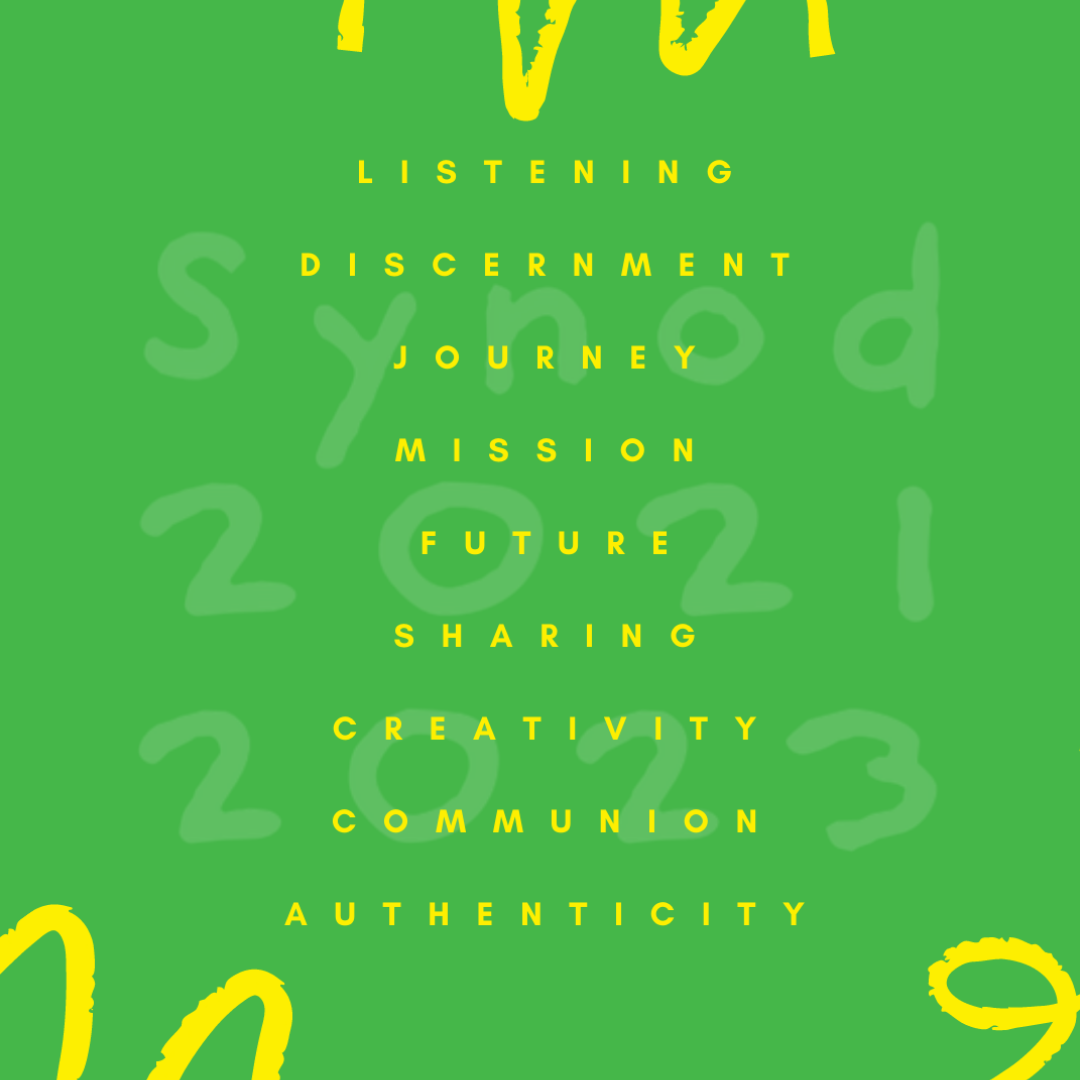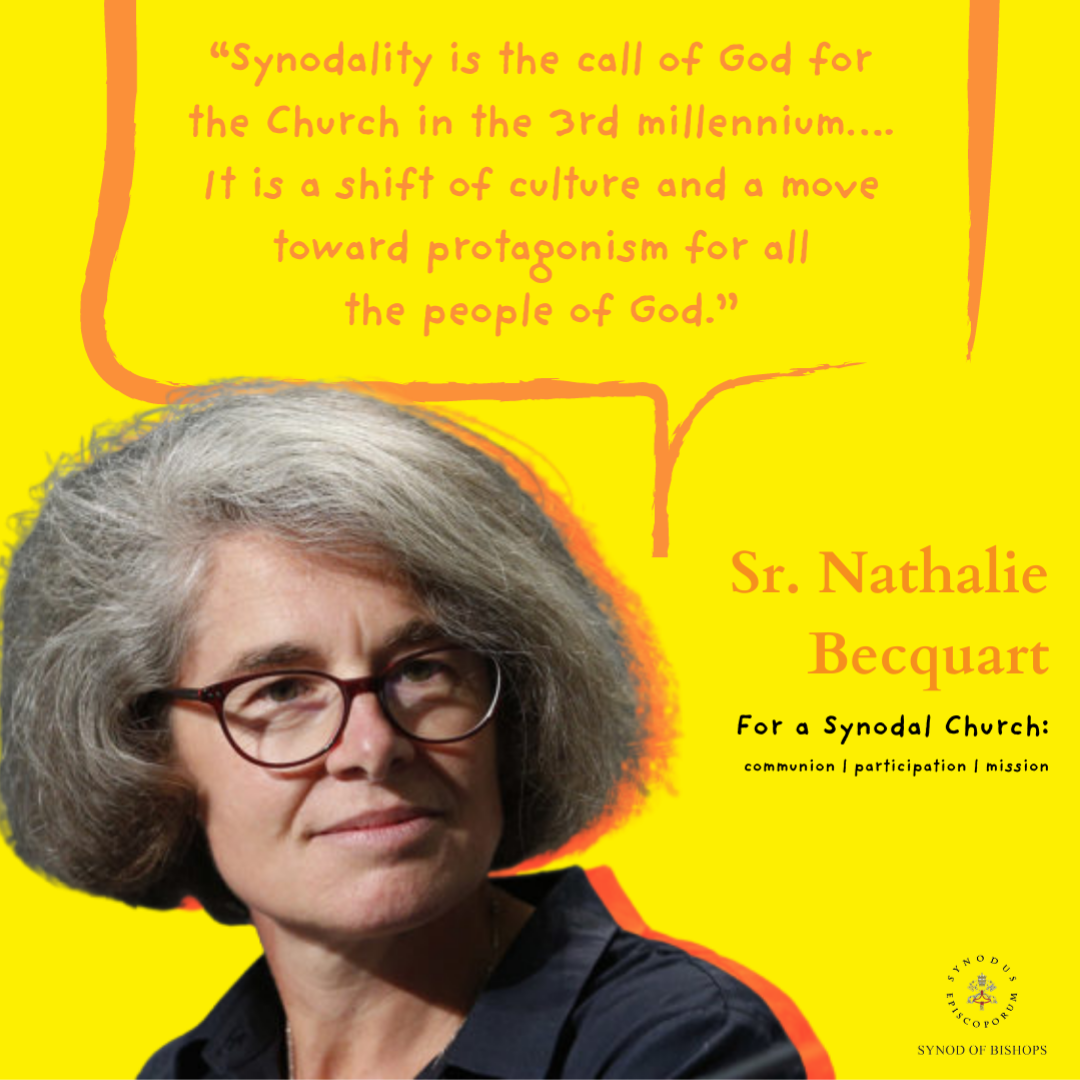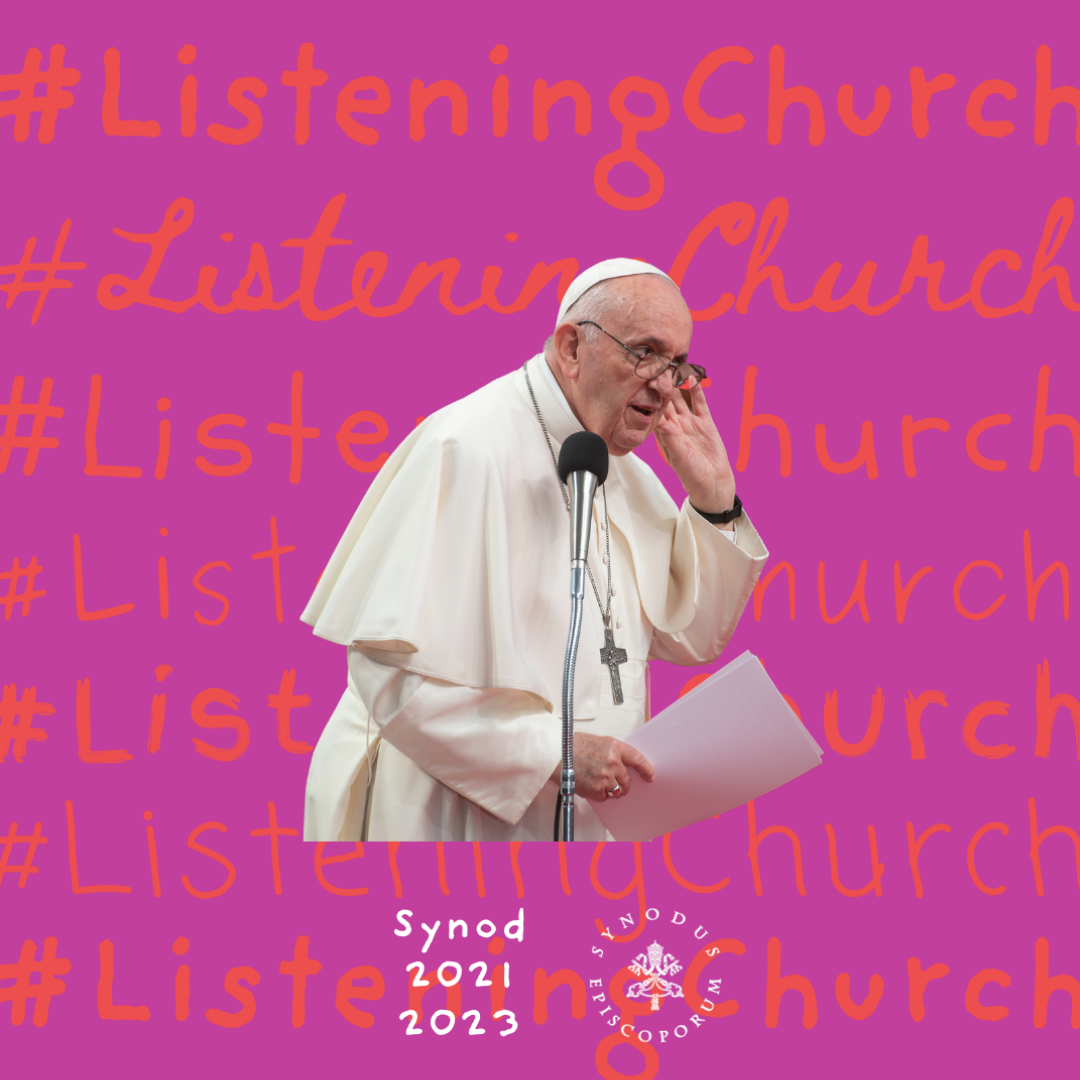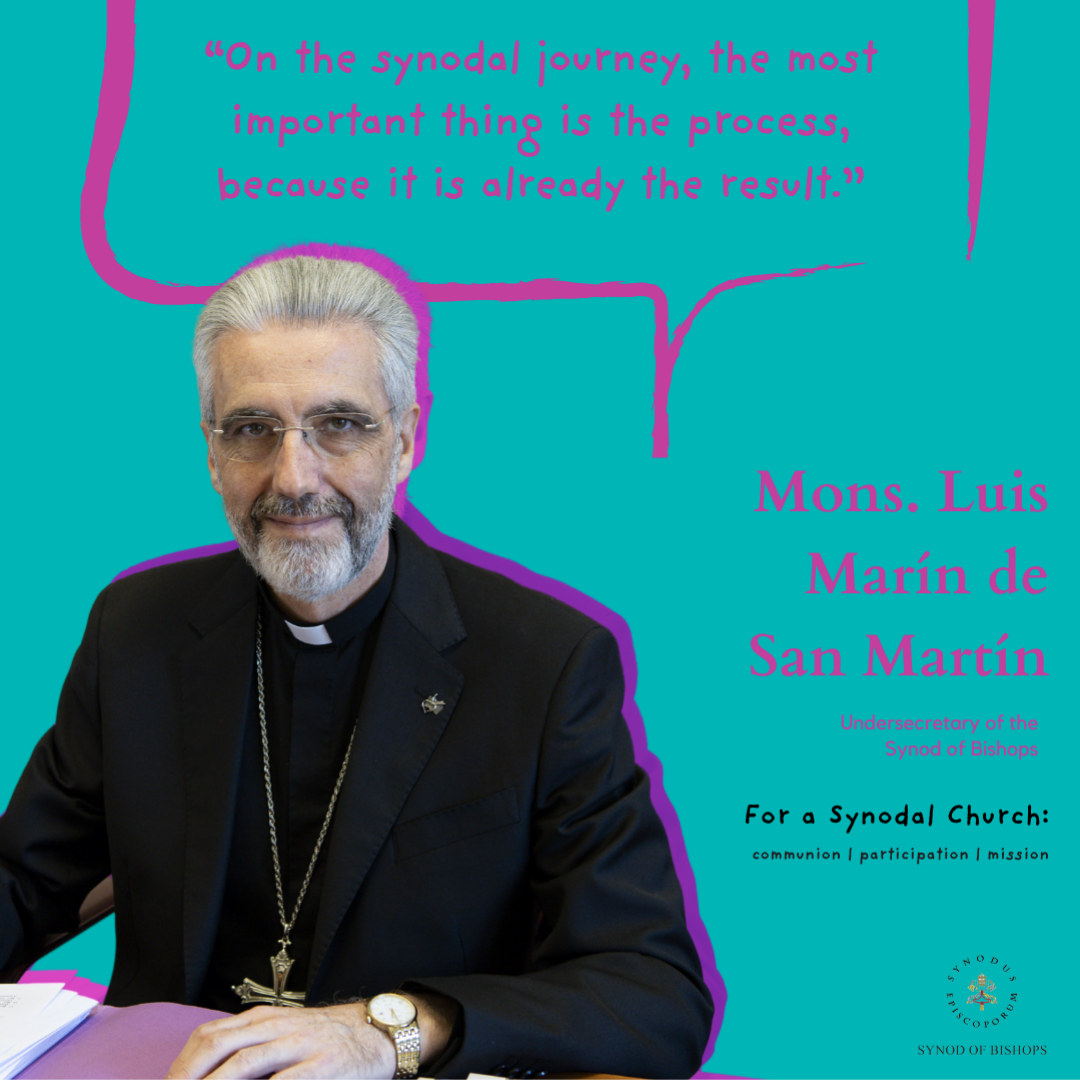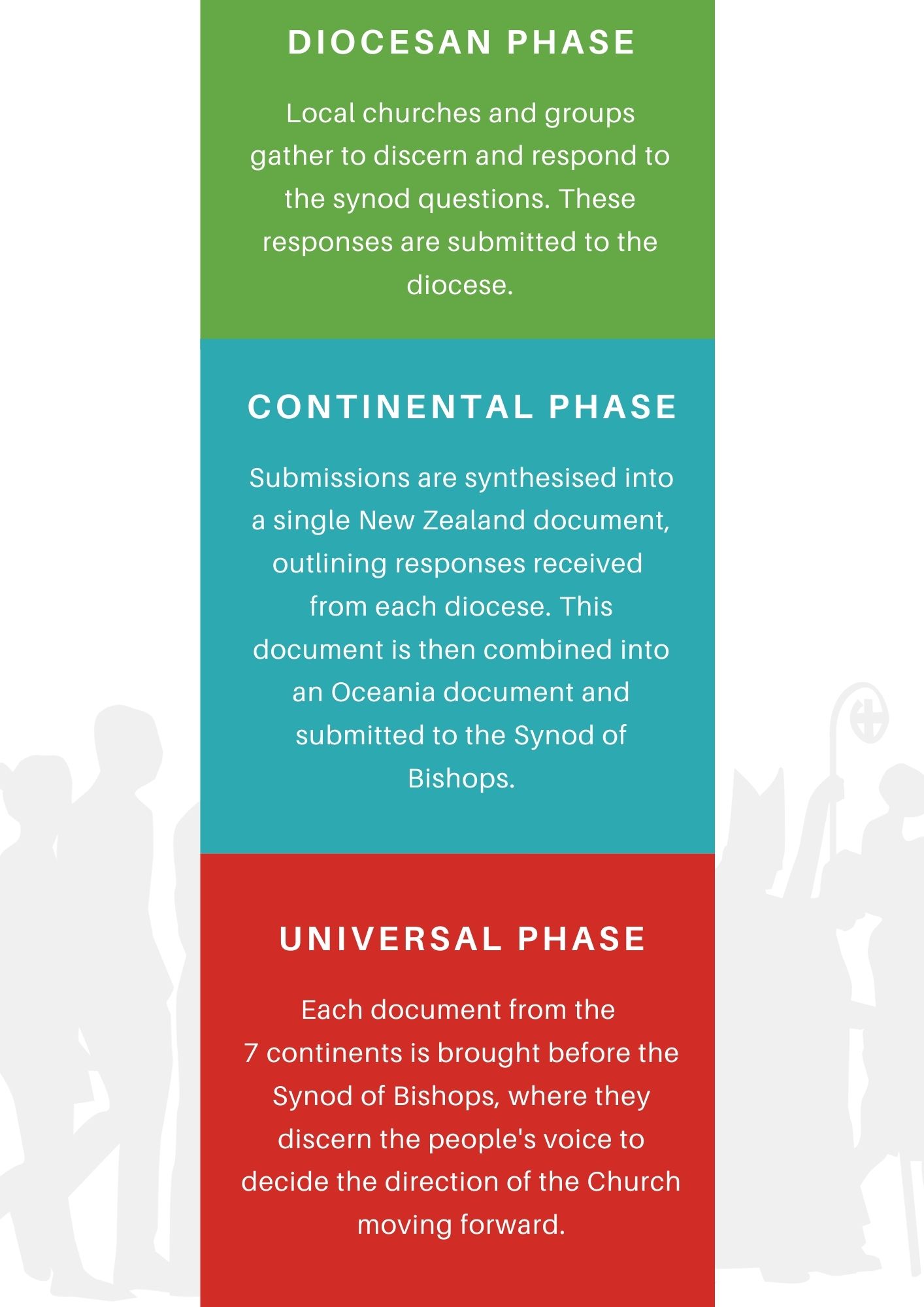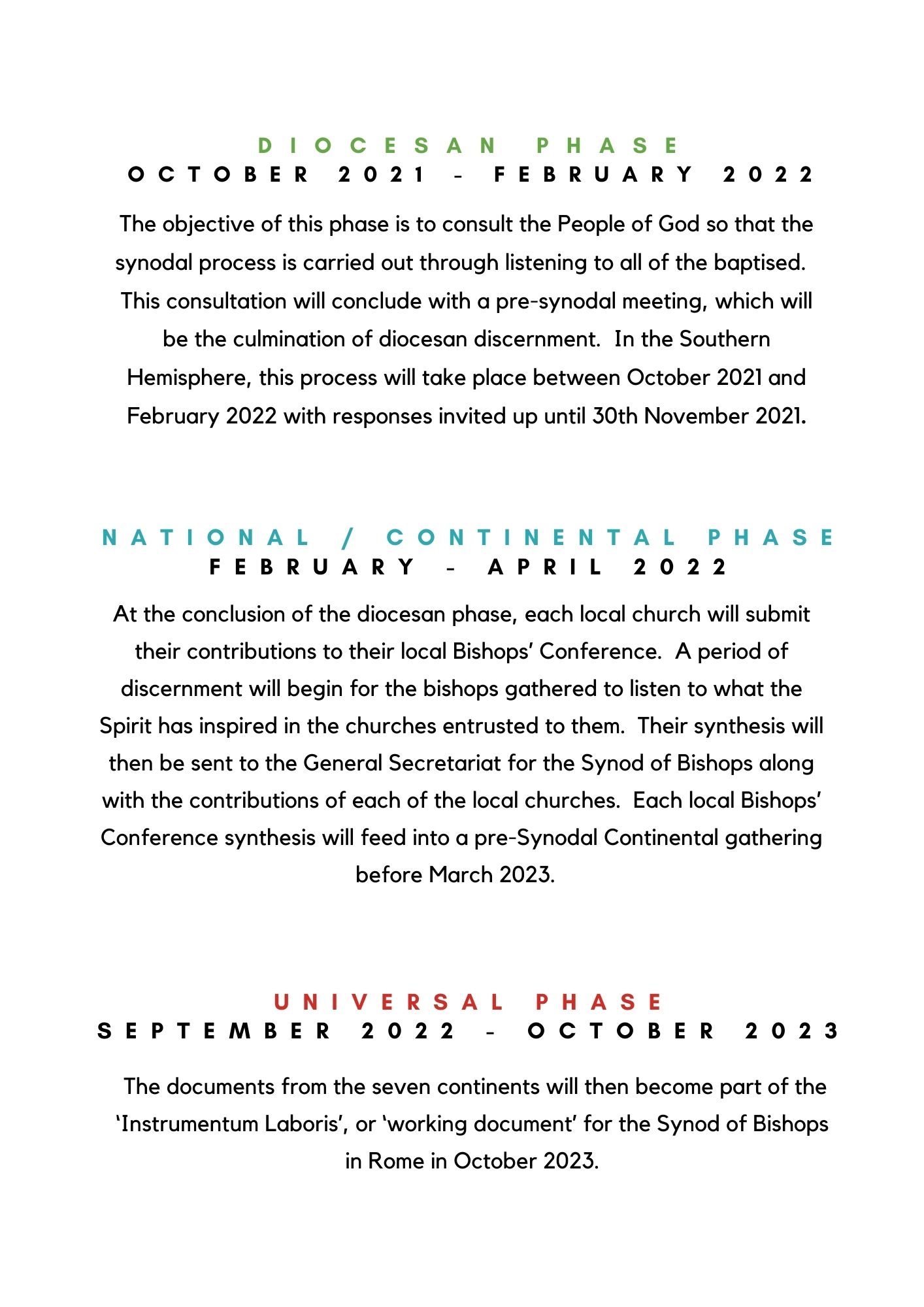
Ehara taku toa, i te toa takitahi, ēngari e toa takitini.
My success is not mine alone, it is ours. The greatest success we will have is from working together.
Pope Francis has invited the Catholic Church to embark on a journey together. Through listening and discernment rooted in the Holy Spirit, the entire people of God will be called to contribute to a process by which the Church deepens in understanding of Her mission and looks toward the future.
In September, Fr. Craig Butler (Local Administrator, Diocese of Palmerston North) distributed a statement about our involvement in this important process. You can read the full statement here.
“We recall that the purpose of the Synod, and therefore of this consultation, is not to produce documents, but “to plant dreams, draw forth prophecies and visions, allow hope to flourish, inspire trust, bind up wounds, weave together relationships, awaken a dawn of hope, learn from one another and create a bright resourcefulness that will enlighten minds, warm hearts, give strength to our hands.”
Synod Preparatory Document, 32
RESOURCES
Participation Booklet
This is the key resource that everyone in the diocese can use to engage in the listening stage of this Synod.
You can both view these documents online and download directly to your device.
Supplementary Resources
This translation of the prayer has been made available and shared with permission from the Diocese of Auckland.
Vatican Resources
Below are some resources from the Vatican that provide the background and prayer foundation for this journey.
How to Take Part
In the Diocese of Palmerston North, consultation for the Synod will take place in local parishes and communities. People from across the diocese are invited to:
Read and Reflect on the resources provided by the Vatican and in our diocesan ‘Participation Booklet.’
Gather and Discern in groups (physically and online) to discuss and discern key questions and themes. Our ‘Participation Booklet’ aims to assist with this process.
Respond to the questions and provide responses either by email, online or by sending in a postal response. How to make a submission.
Pray for the guidance of the Holy Spirit throughout this entire synodal process. You can use the Prayer for the Synod as one way to pray for the Synod.
This consultation phase is open from 1st November 2021 to 31st March 2022.
[This is an extended time frame due to recent changes made by the Vatican]
You may choose to gather a group together specifically to participate in this process, or you may gather as an already established group. Although we encourage you to participate in this process as part of a group, you are still more than welcome to make a response as an individual. Your voice is valuable, and we want to hear it!
How to Make a Submission
Input to the participation process is welcome from both individuals and from groups. Your response can cover all the themes, just one theme or a selection of them. The questions accompanying each of the themes can be used as a starting point or helpful guideline. Your response to the theme should not be limited by the questions.
Responses are due by 31st March 2022 (this date has been extended).
There are multiple ways you can respond:
Online Response Tool
Download the Word document “Synod Participation Response” and
Email your response in Word format to synod@pndiocese.org.nz
Post
Hand-write or type your response to the questions and post it to:
SYNOD 2021-23
Diocese of Palmerston North
PO Box 5279
Terrace End
Palmerston North 4441
The Overall Process (2021-23)
This synodal journey will commence both in the Vatican and in the local churches, starting with the Official Opening with the Holy Father in the Vatican on 9-10 October 2021. This will then be followed by an Official Opening in each local church on Sunday 17 October 2021.
This will be followed by three phases firstly local, then national/continental and finally globally in 2023. Scroll through the following images to find out more about each phase.
Stages for the Diocesan Phase
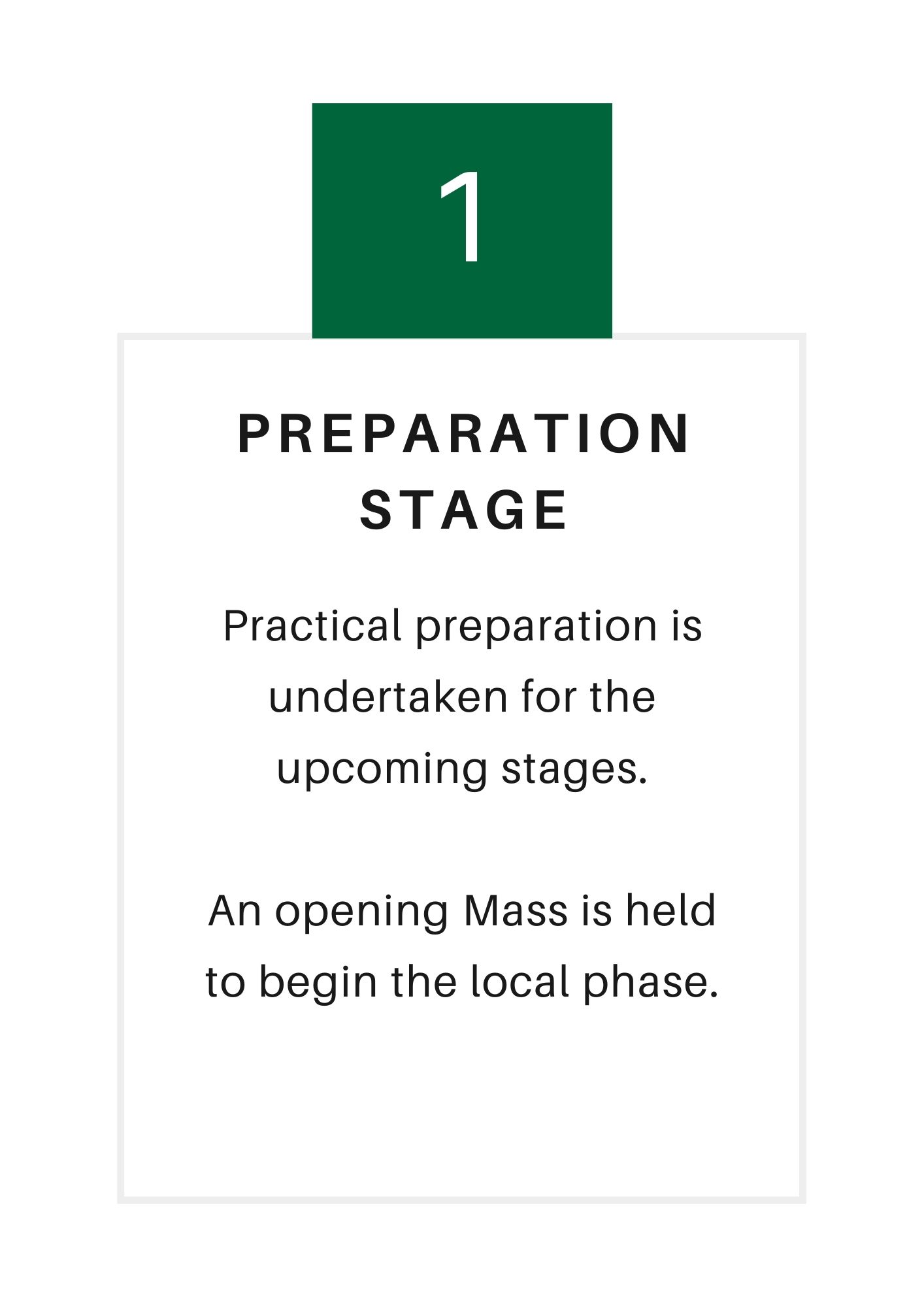
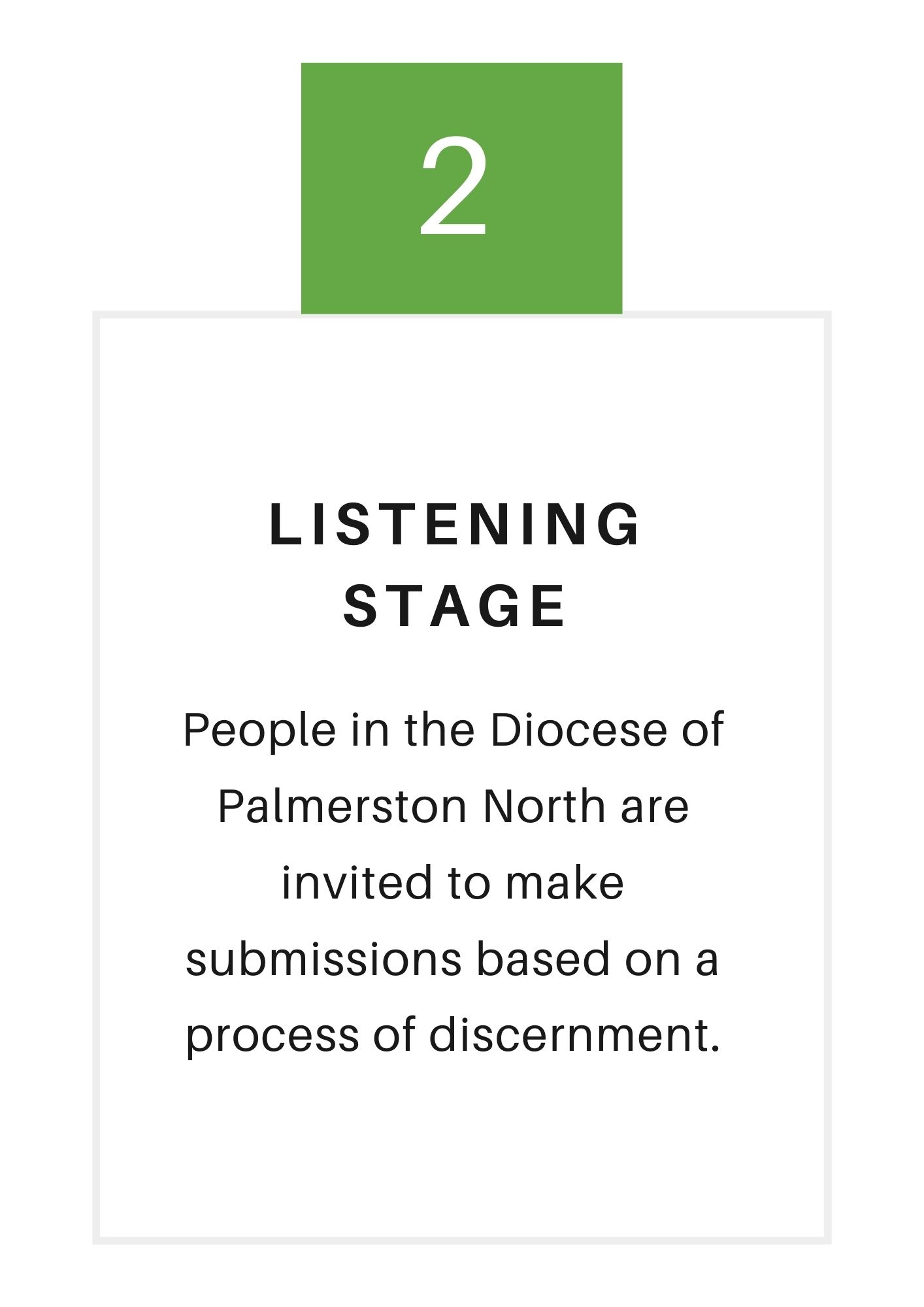
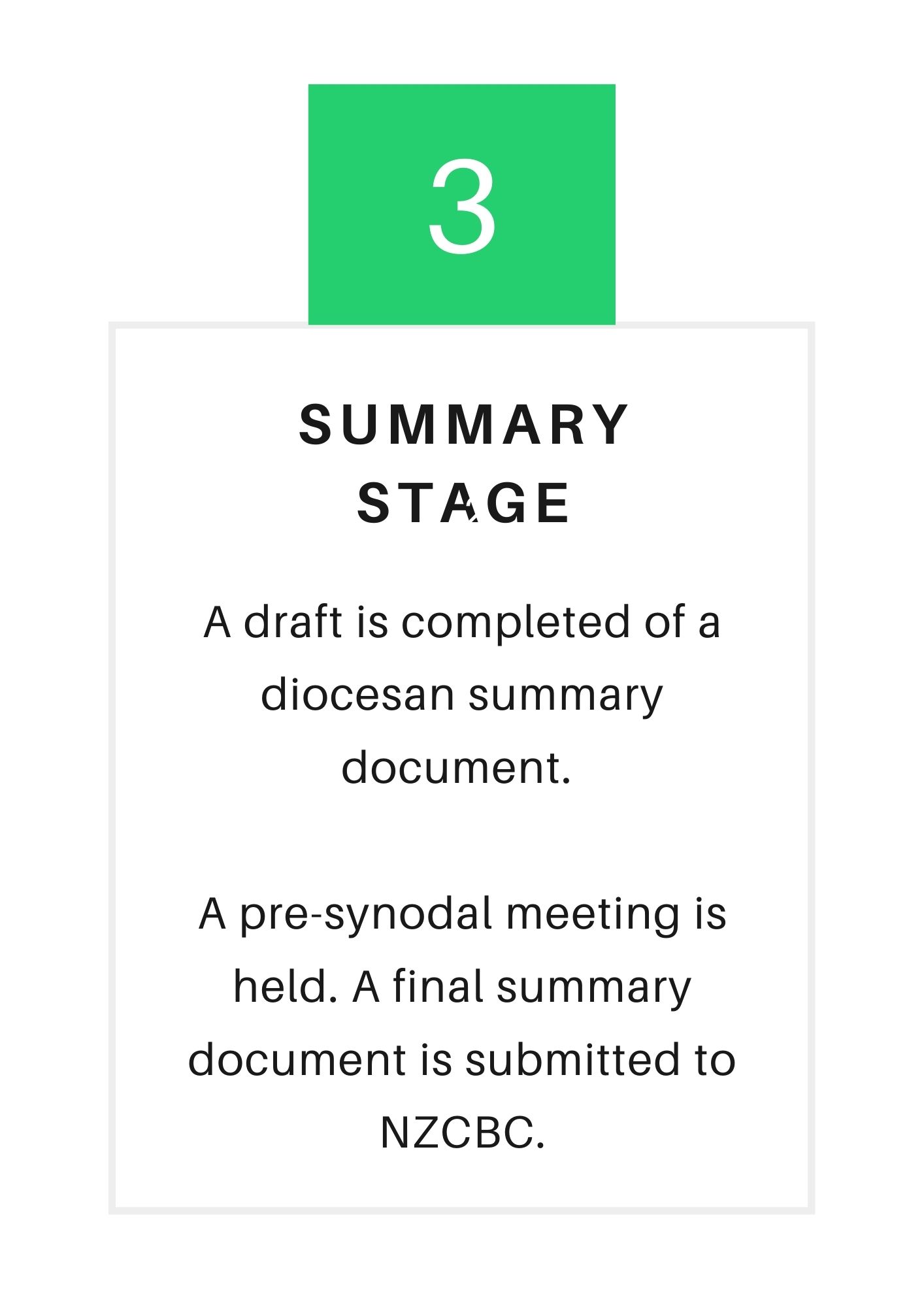
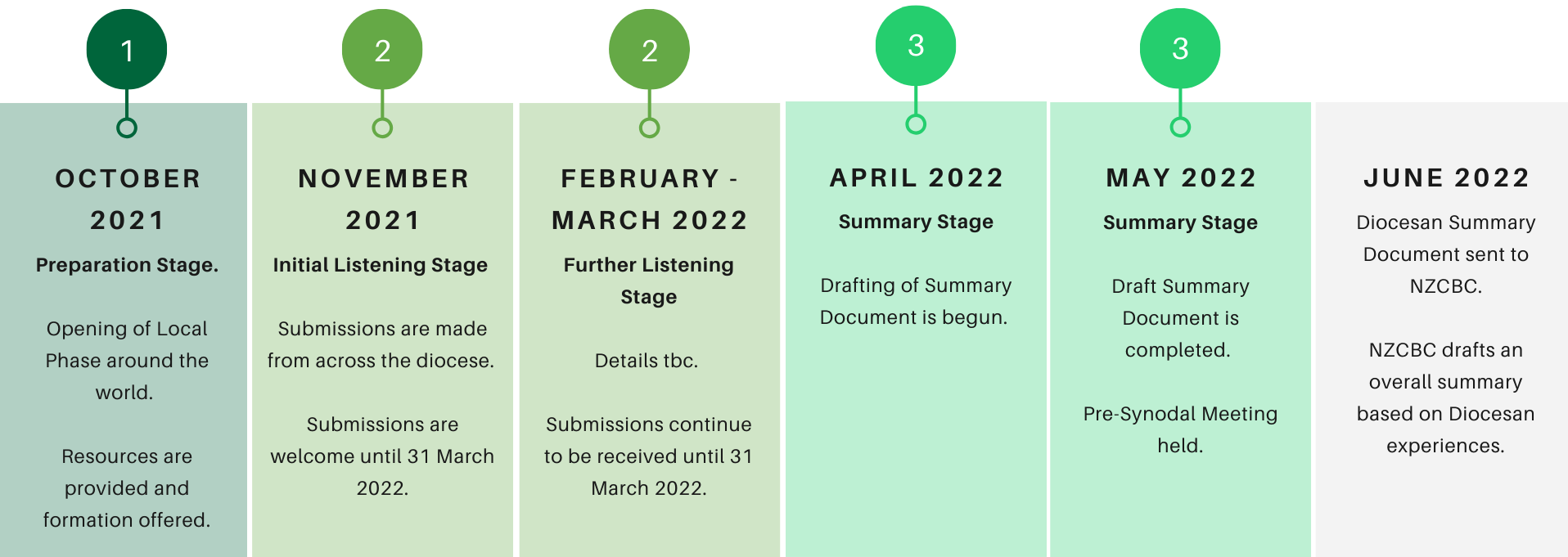

More about this Synod
Synod, synodal, synodality… it gets pretty hard to understand church’y language sometimes!
We’ve attempted to try and simplify things below and answer some of the questions you might be wondering about what this process is going to be like.
What is a Synod?
In the past, we have mostly associated a Synod with a gathering of Bishops reflecting on a particular topic and advising the Pope. But a Synod is more than just an event, is a journey of discernment, in which the people of God are called to pray and reflect upon the Holy Spirit’s will for the Church. Through our listening and our sharing, we will seek to understand what the Holy Spirit’s will is for the topic being discussed – and thus, for the Church.
Okay, what is Synodality then?
We’re still in the process of understanding and experiencing what synodality really is. So, as Thomas O’Loughlin said in a recent article in Tui Motu, if you don’t really know what the word means, “that is a good place to start because no one knows exactly what it means.” He goes on to say that “when we want to be creative, to discover new solutions and face into the future as a challenge knowing that the Spirit is with us, then it is best NOT to start from a very fixed and defined point.”
Synodality is about discerning how the Spirit is moving through and with the Body of Christ, so that we may continue to fulfill our mission to evangelize in the world. Thomas O’Loughlin talks about synodality being a “dream-like, ill-defined image – a sketch or a general pointer” which will help us, through thought, discussion and prayer to discover where we are being called.
Thomas O’Louglin quoted in ‘A Meeting Place Church’ published in Tui Motu Issue 264 October 2021
What is the focus of this Synod?
The fundamental question of this Synod is:
A synodal Church, in announcing the Gospel, “journeys together.” How is this “journeying together” happening today in your local Church? What steps does the Spirit invite us to take in order to grow in our “journeying together”?
Want to know more?
Check back here over the coming weeks for further updates, follow us on Social Media and sign up for our newsletter below.
We also encourage you to consider reading the Preparatory Document, it sets out the vision for this Synod and as far as documents from the Vatican go, this one is reasonably okay to understand!
CONTACT
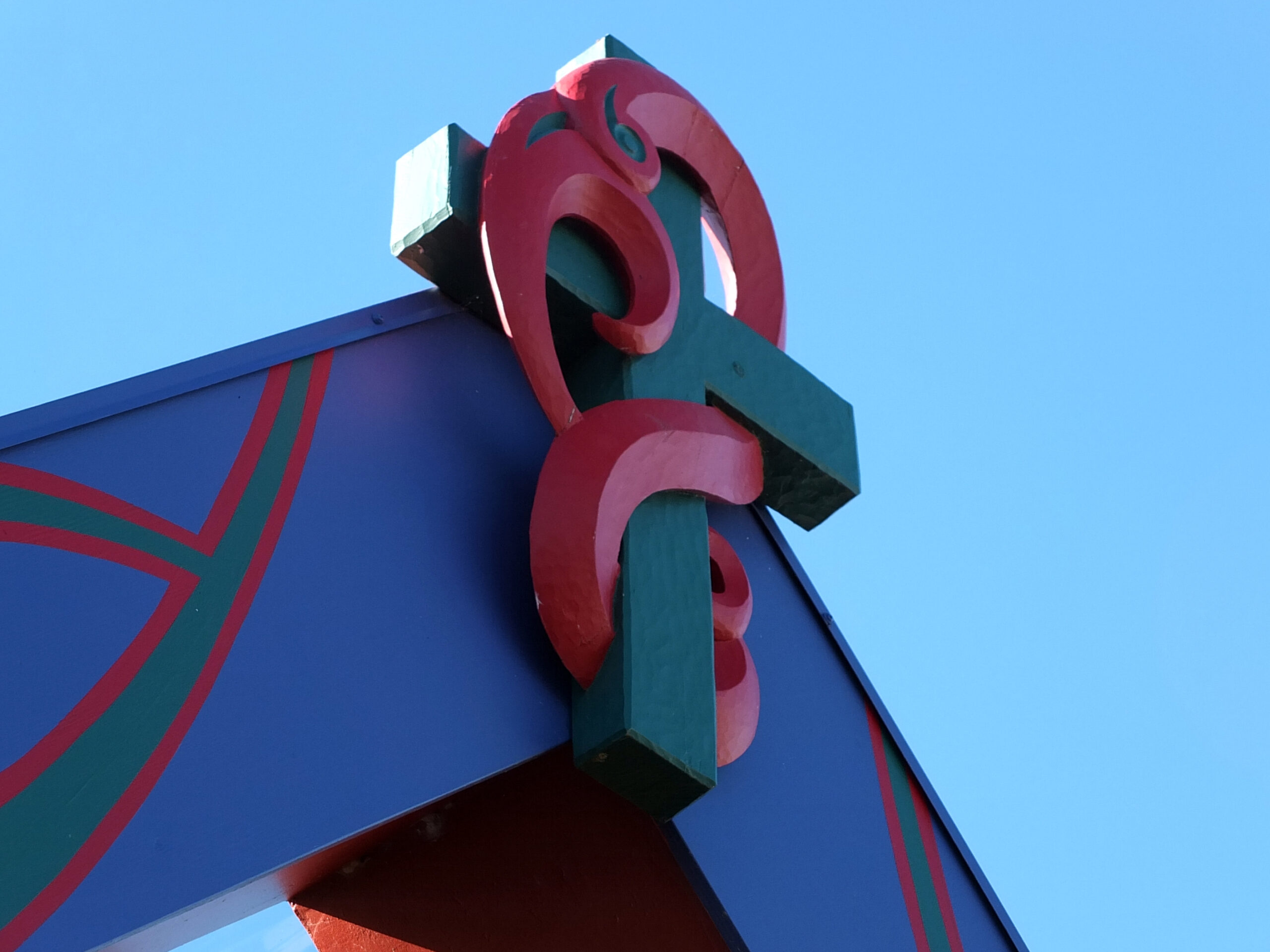
About these carvings
These carvings are from the entrance to Te Rau Aroha, The Diocesan Centre in Palmerston North. This centre is a place of work, gathering, training, formation and celebration and the carvings illustrate the connection with the Mana Whenua (home people) of the region, Rangitane.
A new age is expressed by the use of the traditional (red, white and black) and more specifically the new colours. This symbolises the ever evolving nature of the church, the faith and our diocese.
The apex of the carvings, pictured here, represents the people embracing Christianity. This is represented by a figure representing the people, Māori and settlers, who have come to embrace Christianity.
